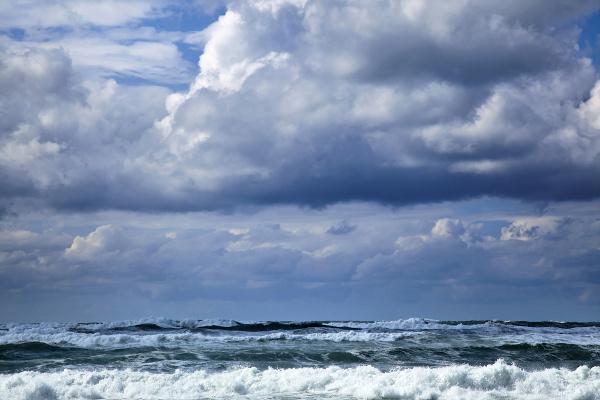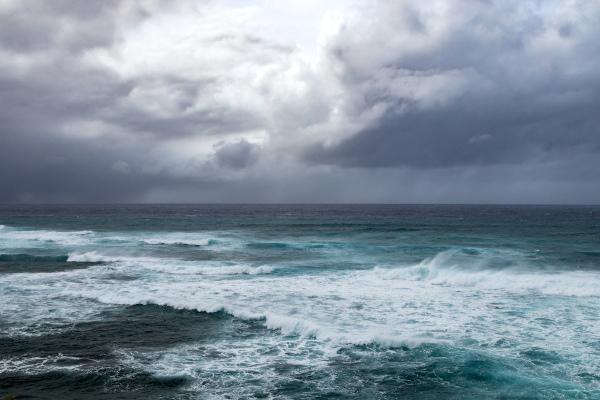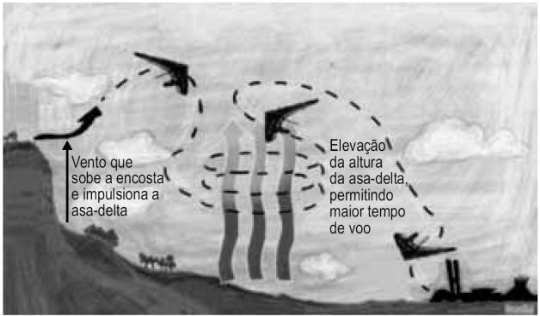winds are important for the natural dynamics of the planet, which involves the climate, relief, formation of rains, among other factors. They are defined as the air displacement and atmospheric pressure variation over a period.
Read too: What are the differences between hurricane, tornado and cyclone?
What is wind?
The planet is surrounded by air, which is the atmosphere. This air makes life possible and is always on the move. When we have the air movement, we have the winds. Its intensity can vary according to geographic and climatic conditions, and it can bring feelings of relief and freshness or even cause catastrophic destruction.

wind origin
the winds come fromvariations in atmospheric pressures, in the high pressure and low pressure areas. They generally blow from the highest to the lowest areas, in a kind of balance.
Due to the sphericity and rotation of the Earth, the winds are in constant movement and have different characteristics, being wet, dry, hot or cold.
Types of winds
The classification of the types of winds existing on the planet varies according to intensity, direction, temperature, humidity, as well as local factors. Let's look at the main types of winds that occur in the world.
breezes: constant winds that blow from the sea to the mainland (day) and in the opposite direction at night.
monsoons: very common in Asia, are winds that blow from the sea to the continent (rainy season, between July and August) and from the mainland to the sea (dry season, between December and January).
windstrades: humid winds that blow from the poles and the tropics towards the equator.
counter trade winds: dry winds blowing from equator line to the tropics.
Cyclones: circular winds that are characteristic of tropical and subtropical storms, with air masses that are in constant rotational motion.
Typhoon: circular winds (cyclones) formed in the Asia. It has the same characteristics as hurricanes, with the exception of location. Typhoons are usually found in Asia, near the Equator, in the Pacific Ocean.
Drilling: circular winds (cyclones) that reach 400 km in diameter. The direction of its direction varies according to the hemisphere: counterclockwise in the Northern Hemisphere and clockwise in the Southern Hemisphere. They are quite common in the Caribbean Sea and the east coast of the U.S.
tornado: the strongest of the winds, reaching up to 490 km/hour. Its size can be up to 10 km in diameter, being formed by eddies and dust, occurring in temperate zones in the Northern Hemisphere.
Read too:Why is the United States so hit by hurricanes and tornadoes?
wind movement
THE rotation of the planet causes, on the Equator line, the winds blow horizontally, in a straight line. However, in the Northern and Southern hemispheres, this movement occurs in a different way. At the Northern Hemisphere, generally the winds are forced to blow to the right, the opposite occurring in the Southern Hemisphere, that is, to the left.
In the north of the planet there are many emergent areas and mountain ranges. Thus, winds can reach 200 km/hour in certain periods, but they do not compare with the constancy of the west winds that blow in the Southern Hemisphere, mainly in the areas of the Indian Ocean and Pacific, the latter being a place with many storms at sea.
Importance of winds
The movement of air is fundamental to the development of life on Earth. In general, the winds have the function of bringing cold air to the equator and hot air to the poles, a essential balance for temperatures not get so extreme in the areas mentioned. There is also the importance of determination of different climate types.
In addition, the movement of the winds carries moisture to different areas of the planet, producing rain. However, very strong winds can damage plants and trees, which thrive in areas with excessive wind.
In this way, in order to grow, the vegetation adapts itself to the region in which it is located, whether at a reasonable height so as not to suffer so much interference from the wind, either with flexible branches, which bend but do not break.

When studied, wind has significant advantages. Human beings have learned to use it in their favor, such as in the construction of large mills, in propelling sails on ships, in the production of wind energy, among other applications.
meteorological phenomena
The formation of meteorological phenomena has a lot to do with the movement of air masses and differences in atmospheric pressure. Events such as the appearance of cyclones, hurricanes and tornadoes occur due to differences in atmospheric pressures, air humidity, in addition to temperatures at certain times of the year.

Furthermore, theEl Niño and the La Niña, which are sporadic events in the Pacific Ocean, on the west coast of South America, transform the entire rainfall dynamics of adjacent regions through the action of winds.
solved exercises
Question 1 - (Udesc 2016) Check the alternative that correctly describes the characteristics of the Earth's atmosphere.
A) The major gases in the atmosphere are hydrogen and oxygen.
B) In the layer called the thermosphere, there is the greatest concentration of ozone gas in the atmosphere.
C) The layer called troposphere is thermally unstable, a fact that causes meteorological phenomena such as rain and wind.
D) The atmosphere becomes thinner and thinner as altitude decreases.
E) The composition of the atmosphere has remained unchanged since the formation of the planet, billions of years ago, until the advent of the Industrial Revolution.
Resolution
AlternativeC. It is in the troposphere that most meteorological phenomena occur, such as air movement (wind) and rain.
Question 2 - (Unesp 2016)

(Ercília T. Steinke. Easy Climatology, 2012. Adapted.)
The image illustrates the most common route for hang gliders between the Paraná Valley and the Esplanada dos Ministérios in Brasília, about 90 kilometers away. The following are factors that allow for the long duration of this flight:
A) the angle of incidence of the sun (the intensity of solar energy reaching the Earth) and the occluded front (the action of the movement of the cold air current lifting the hot air until it loses its contact with the surface).
B) gravity (the force of attraction between two bodies) and adiabatic expansion (the expansion of large air bubbles until they meet lower atmospheric pressure values).
C) the land breeze (the formation of a high pressure field close to the surface) and the divergent altitude winds (the formation of an area receiving rising winds).
D) friction (the force generated in the opposite direction to the wind displacement) and the Coriolis effect (the rotation of air masses in the horizontal direction as a function of the Earth's own movement).
E) the conduction process (the transfer of heat from the surface to the layer closest to the atmosphere) and the convection process (the cyclical dynamic between rising hot air and cold rising air goes down).
Resolution
Alternative E. In this type of sport, longer flights depend on the action of wind and heat to happen, such as cyclical movements and the transfer of warmer air to the upper layer of the atmosphere.
By Attila Matthias
Geography teacher
